Thanks to Patrick over at Gil Carandang's Website for this awesome recipe. To get the full article visit GilCarandang.com
How to Make:
- Get container, fill halfway with rice-wash. Rice wash is the water leftover when you rinse fresh rice. For example, go buy rice, whatever kind, bring it home, put it in a pot with warm water, swirl it a bit and then drain the [now milky colored] water. The water is now a rich source of carbohydrates. In this step, you can substitute rice with another carbohydrate source if you don’t have rice, as long as it is complex (don’t use simple carbohydrates like sugar, honey, syrup, molasses, etc). You can use wheat, barley, kinoa, other carbohydrates as the base to make your carbohydrate wash. This wash will attract microbes from the air, among them lacto bacilli.
- Cover loosely and let stand for a couple days to a week
- When is it done? When you see a light film on top (molds) and it smells a little sour and forms 3 layers. This is indicating the rice wash is infected with various microbes. This happens more quickly in warm temperatures because microbes are more active. Thus it is all relative since we don’t do this in controlled laboratory conditions.
- The layers are distinct
- Top layer: floating carbohydrates leftover from fermentation and possibly molds
- Middle layer: Lactic Acid and other bacteria (cheese buffs will recognize this as a makeshift “rennet”). We will use this layer.
- Bottom layer: Starch, byproduct of fermentation
- Extract the middle layer using a siphon. This layer contains the highest concentration of lactic acid bacteria and lowest concentration of the unneeded byproducts
- Get a new container, larger than the first. Take the extracted serum from the last step and mix it with 10 parts milk. By saturating with milk (lactose), we dissuade other microbes from proliferating, leaving L. bacilli. E.G. if you have 1cup of the serum, mix it with 10cups milk.
TIP: The best milk to use in unpasteurized natural milk. However, any milk will do, even powdered milk. In our experience, the best is unpasteurized natural but just use what is available. We just want to saturate with lactose to promote L. bacilli bacteria.
- You want to keep this stage anaerobic as much as possible. You can use something like rice bran, barley bran, wheat bran, etc sprinkled on top of the milk. I use a sealed container with a one-way valve.
- After about 1 week (temp dependent), you’ll see curds (made of carbohydrate, protein, and fat) on top of the milk. The water below will be yellow colored – this is whey, enriched with lactic acid bacteria from the fermentation of the milk.
NOTE: Microbes like L. bacilli are more active in warmer temperatures. The curds you see are a byproduct of the fermentation process. Fermentation is generally associated with microbial processes under anaerobic(no oxygen) conditions. Now, L. bacilli is a facultative anaerobe, that is it can live and work with or without oxygen, but less competition in anaerobic conditions.
- The water below(whey+lacto) is the good stuff. You want to extract this. You can either skim the curds off the top, pour through a strainer, or whatever other methods to accomplish that
NOTE: Remember the curds, or byproduct of milk fermentation by L. bacilli, are great food. They are full of beneficial microbes like L. bacilli. Feed the curds to the soil, compost pile, plants, animals, humans – whoever wants them! They are full of good nutrients/microbes. No waste in natural farming.
- To preserve at room temperature, add an equal part sugar/molasses to the serum. So, if you have 1L of serum, add 1kilo sugar or 1L molasses. Otherwise store in fridge to keep.
Example Recipe:
- 1 L rice wash
- 10L Milk
- 10kg sugar
- After rice wash and milk remove curds – around 1L
- = 20 L lactic acid bacteria serum

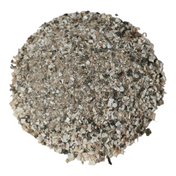
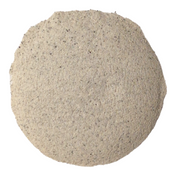


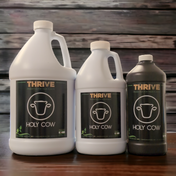

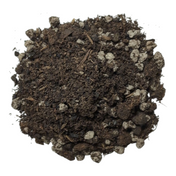
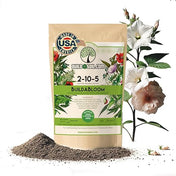
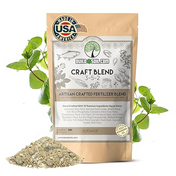
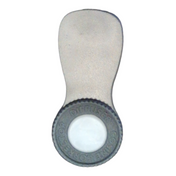
10 comments
Liked your vido,good job. Please send your report
Thanks Terry
hi Patric
I love so much your video.I am so exited!!! I can’t believe that things can be so simple.Please forgive me in advance ,my english is very bad because, I am not an english speaker,but things I am reading here are so intersting!
thanks at lot from France! I will let you know my experience very soon.
Thank you Mr Garandang ,,Patric and all the team.
All the best .
ps: Please, how can I get the book?
Great resource here. Will use info to springboard into new and exciting adventures
Thank you, reguards!
Jeremy,
Super… Everything I need all on one page: Video & Receipe Both, Thank you for taking the time to make this presentation. Very precise … very helpful… succinct, to the point … meaty stuff… thanks, too for the “How To Make” section under the video… between the video and the recipe-section I GOT IT!
Thanks again.
PS: Is LactoBacillus remotely the same as EM-1? sort of the same? not at all? Any idea?
John Child in Radnor Township PA … (text/call: 610-203-6458)
where we’re trying to get folks hip to Bokashi Composting in the Philadelphia Suburbs
BokashiJohn@Gmail.com
Hello Sir, molasses is hard to find here in my place what is the best substitute to this, we have muscovado sugar here but i dont know how to use it, will i pour it or is there any dilution before putting to the lacto serum, another thing is that how will i know if my lactobacilli is still alive inside the bottle, thank u for your help Sir hoping for your reply.
Thank you very much Sir for your advice ok ill make a new one
dexter tamayo on February 17 2014 at 09:17PM
thank u Sir for your response, Sir im on the last stage of making lacto serum, rice wash infection plus 10parts of milk, after a week ive noticed white tiny worms on top of it looks like maggots? am i on the right track? or do i need to maketa new one, one thing more do i need to seal properly the tupperware while fermenting the 1 part infection and 10 parts milk? and how will i know if lactobacilli is alive after having the final lacto serum
COMMENT:
Hello Dexter!
I have never noticed tiny worms on top of the milk mixture and I wouldn’t say that is normal and not safe to use.
Yes, you should probably make a new one.
While waiting for the rice wash and milk to separate into whey and curds, you should keep a lid tight. See the quote below.
“You want to keep this stage anaerobic as much as possible. You can use something like rice bran, barley bran, wheat bran, etc sprinkled on top of the milk. I use a sealed container with a one-way valve.”thank u Sir for your response, Sir im on the last stage of making lacto serum, rice wash infection plus 10parts of milk, after a week ive noticed white tiny worms on top of it looks like maggots? am i on the right track? or do i need to maketa new one, one thing more do i need to seal properly the tupperware while fermenting the 1 part infection and 10 parts milk? and how will i know if lactobacilli is alive after having the final lacto serum
Hello Dexter. If you want a faster response you can always call or email me.
The Lacto Serum is safe to use with every watering but that isn’t necessary.
It’s really up to you.
I mainly use the Lacto B Serum in combination with Making Fermented Plant Extracts.
Then I use these plant extracts once per week or so, mainly on seedlings and plants that may need some extra help.
how many times will i use to spray the lactobacillus serum in my plants, is it everyday?hoping for ur immediate answer